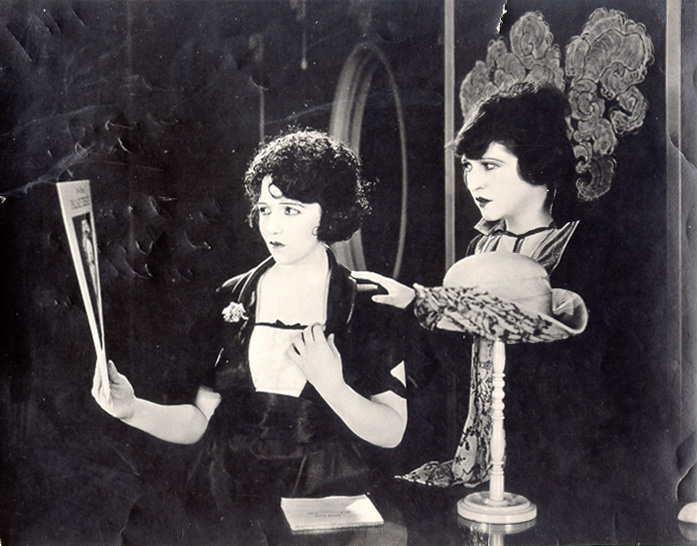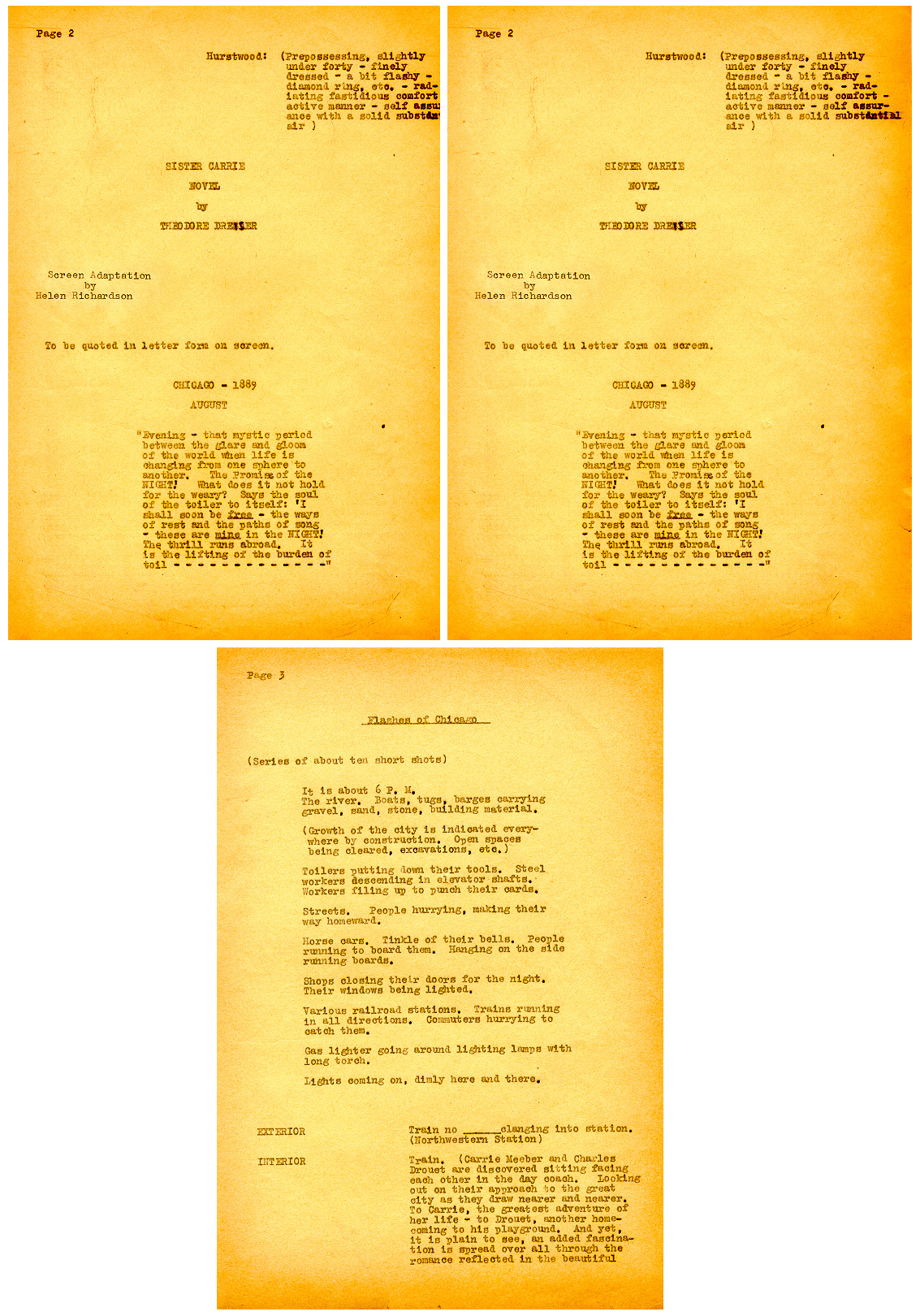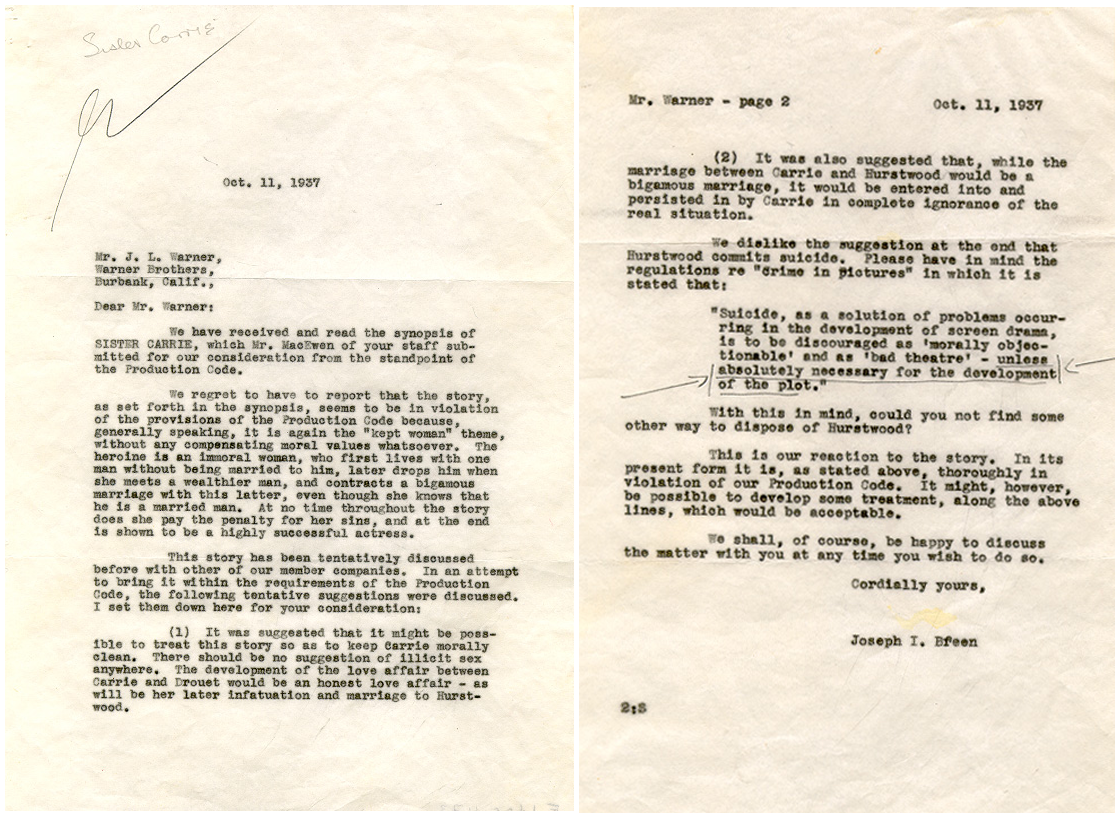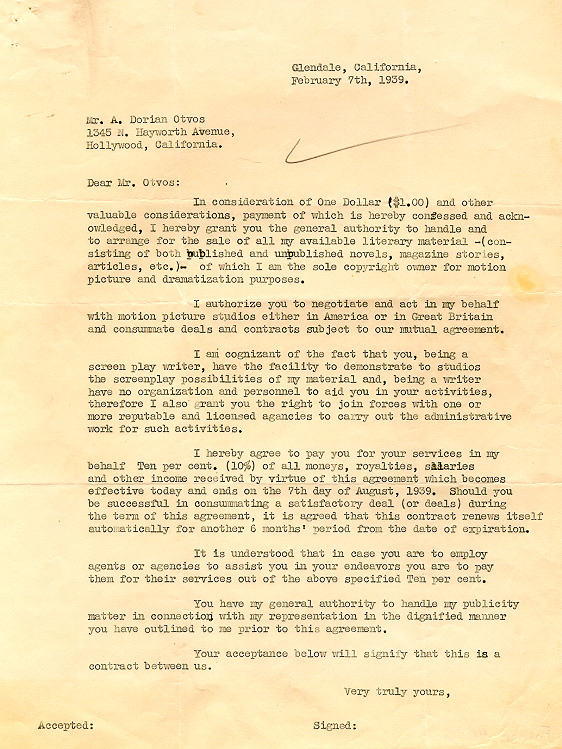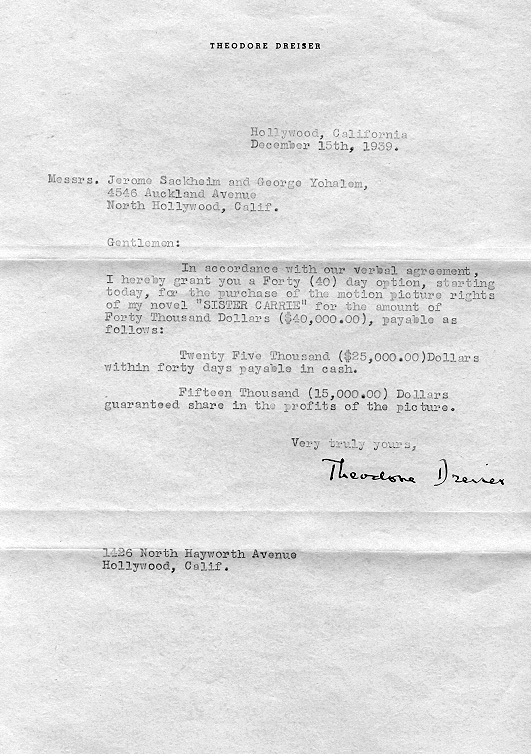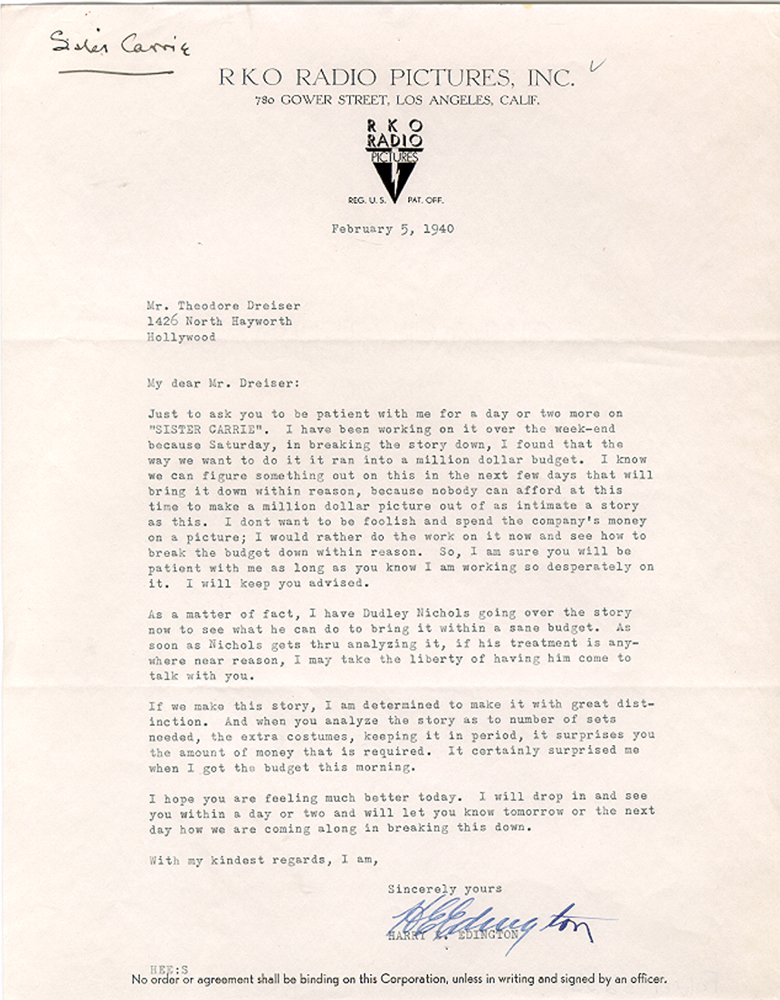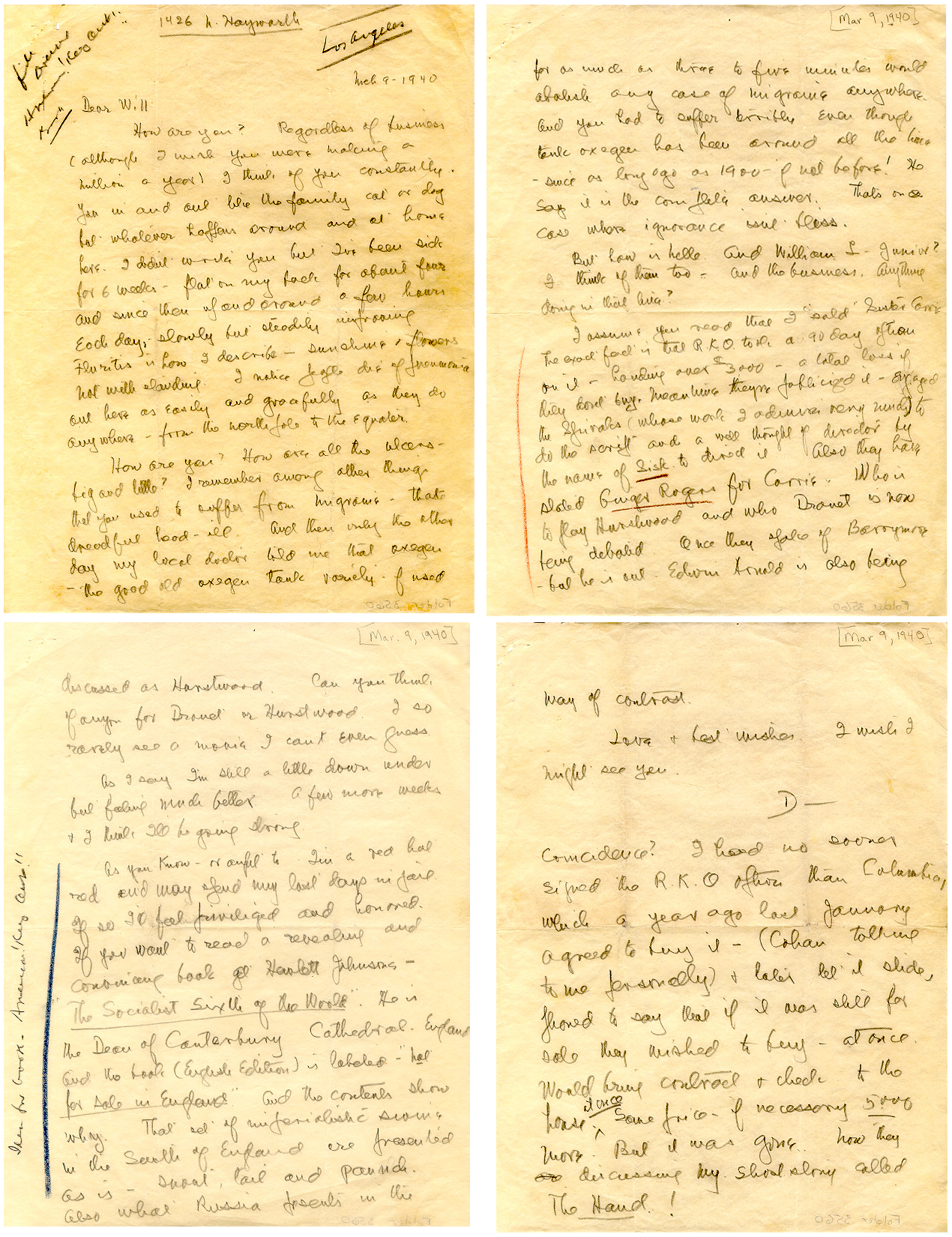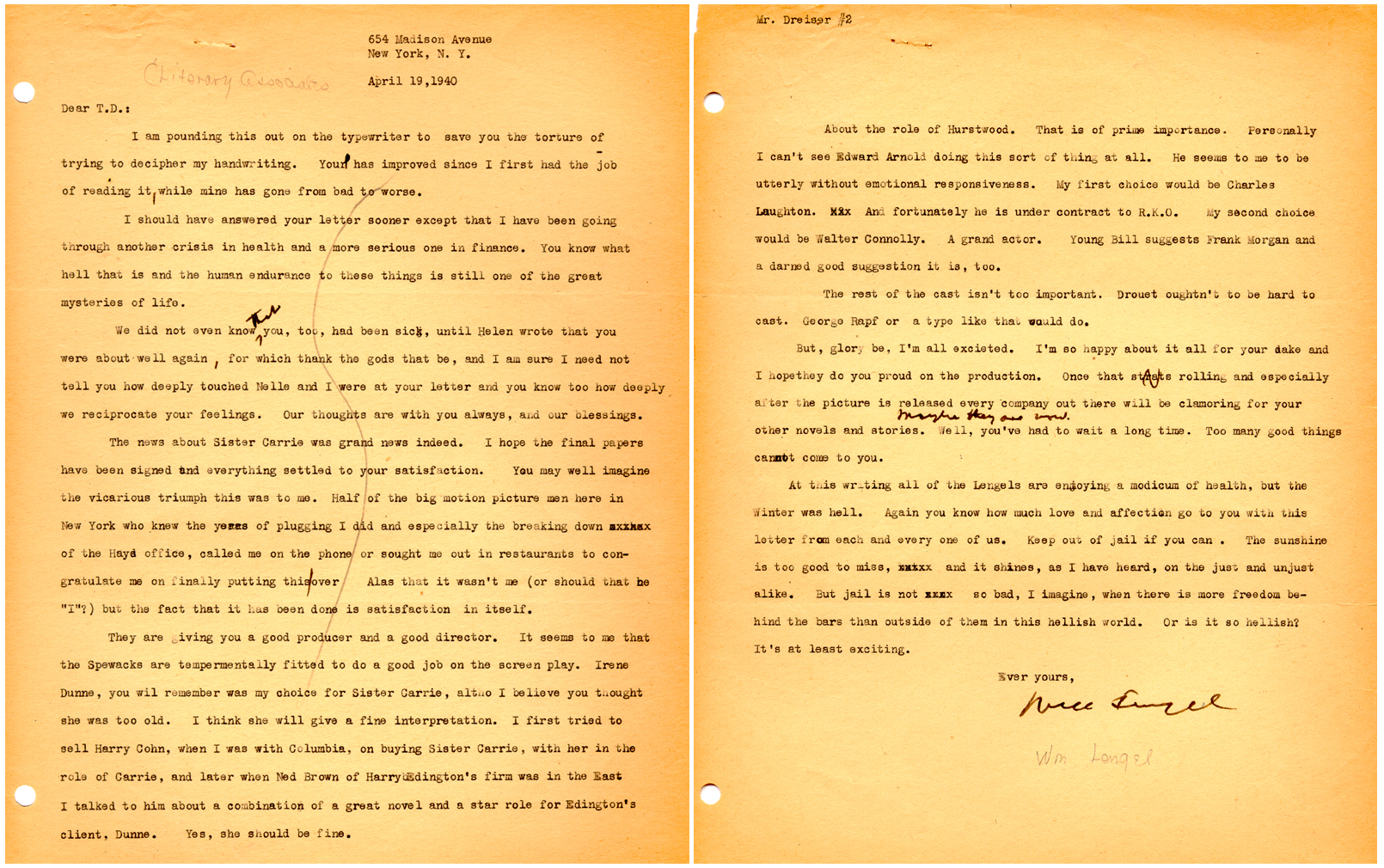In Dreiser's lifetime an adaptation of Sister Carrie never reached the stage nor the silver screen. Scenarios, scripts, and plans, however, were developed with Dreiser's full knowledge and support. In 1922, for example, Lionel Barrymore telegramed Dreiser about being "enormously interested in possibility of playing Heirstwend [sic] it would make a great play." In the late 1920s Dreiser met the New York theatrical producer, H. S. Kraft, who proposed dramatizing Sister Carrie with Paul Muni as George Hurstwood. Kraft engaged the successful playwright John Howard Lawson, who completed a script. Dreiser, however, rejected his work and the project was abandoned. By 1939 Dreiser was intently seeking to sell the motion picture rights to Sister Carrie. In 1940 they were sold to RKO for $40,000, although it was not until 1952 that a cinematic version was produced--not by RKO--but by Paramount Pictures.
Fig. 1: RKO never produced a movie based on Sister Carrie, but in 1952 Paramount Pictures premiered the first and only screen adaptation. It was titled Carrie and starred Jennifer Jones as Carrie, Laurence Olivier as Hurstwood, and Eddie Albert as Drouet. Produced and directed by William Wyler, the screenplay was written by Ruth and Augustus Goetz.
Fig. 2: When Helen Patges Richardson met Dreiser in 1919, it was her dream to become a Hollywood actress. Her desire coincided with Dreiser's interest to experience Hollywood first-hand. Helen enjoyed moderate success as a film extra and secondary actor, enough to maintain at times their California existence. Dreiser, however, eventually decided he missed New York and must return in order to write productively. In 1922 Helen gave up her screen career to follow Dreiser back East. In this photograph she appears at right, Mabel Normand at left.
Fig. 3: Perhaps Helen's Hollywood experience as an actor contributed to her ability to draft a screenplay for Sister Carrie. Not only does the typescript present the dialogue and setting, it carefully articulates the camera shots that provide visual background or introduction to the story. Unlike many of the adaptations for the stage in which the first scene takes places in Hurstwood's saloon, Helen's screenplay begins with Carrie and Drouet en route by train to Chicago.
Fig. 4: In a letter to Michel Kraile dated 1 November 1938, which was written in response to Columbia Pictures's request for his report on the screen adaptation of Sister Carrie, Breen enclosed a copy of his letter to J. L. Warner in which Breen had evaluated the plot with regard to the Production Code of the Hays Office. Among the problems with Dreiser's story are (1) Carrie's immorality as evidenced by her sexual relations without being married and (2) the suicide of Hurstwood.
Fig. 5: Although his long-time friend and supporter William Lengel had been working as his agent, Dreiser decided to engage another representative, A. Dorian Otvos, to negotiate contracts with motion picture studios in the United States and Great Britain. This contract was ultimately changed by Dreiser to read fifteen percent instead of ten percent: it yielded the RKO deal concerning the film rights to Sister Carrie.
Fig. 6: This forty-day option for the purchase of the motion picture rights to Sister Carrie would have culminated in a $40,000 return for Dreiser.
Fig. 7: Edington asks for Dreiser's patience as RKO tries to compile a storyboard for the adaptation of Sister Carrie to the screen that does not require a million-dollar budget. In a letter dated the very next day, Edington asks if Dreiser would be willing to take $2,500 for the ninety-day option rather than $5,000.
Fig. 8: On pages two and four of this four-page letter, Dreiser discusses the movie-version of Sister Carrie, noting, for example, that RKO has "slated Ginger Rogers for Carrie." For Hurstwood, "Barrymore" had been spoken of "but he is out," and Edward Arnold is now being considered. In his postscript Dreiser claims that Columbia Pictures contacted him to buy the motion picture rights to Sister Carrie and would even exceed any other offer by $5,000.
Fig. 9: Lengel congratulates Dreiser on finally selling the motion picture rights to Sister Carrie. He also offers his opinions about casting, indicating that Irene Dunne had always been his first choice for Carrie. He disagrees about Edward Arnold in the rôle of Hurstwood, opting instead for Charles Laughton.

